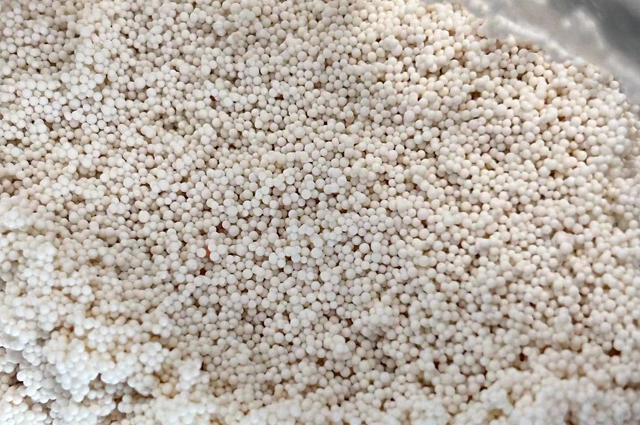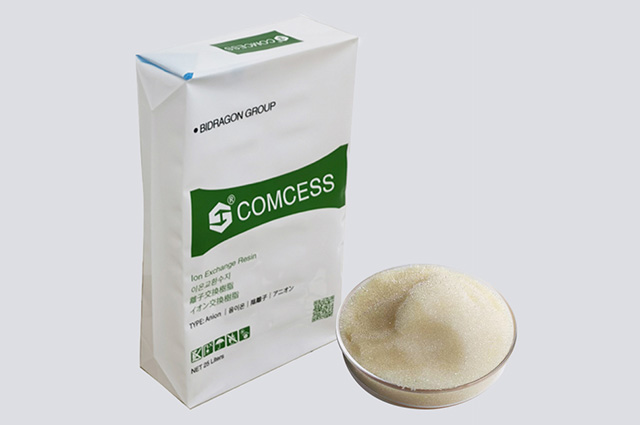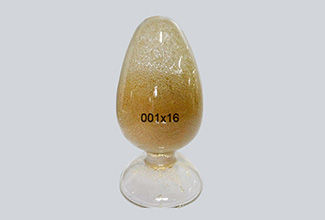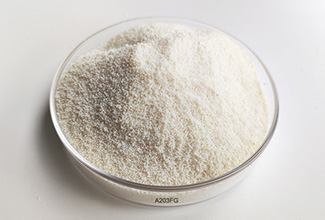What is The Function of Anion Exchange Resins?
The main functions of Anion Exchange Resins include separation and purification of anionic substances, recovery of valuable anionic substances, adjustment of the anion concentration of a solution, and preparation of anionic solutions.

Specifically:
Separation and purification of anionic substances: The anion exchange resin can separate and purify anionic substances by combining the anionic substances in solution with the exchange groups on the resin.
Recovering valuable anionic substances: anion exchange resins can recover valuable anionic substances, such as metal ions and rare earth ions, from waste.
Adjusting the anion concentration of a solution: By exchanging with anionic substances in a solution, anion exchange resins can adjust the anion concentration of a solution, e.g., adjusting the concentration of chloride ions in water quality.
Preparation of anionic solutions: By exchanging with cationic substances in solution, anion exchange resins can prepare anionic solutions, such as chlorine.
Principle of Anion Exchange Resins
Anion exchange resins work by exchanging anions in solution with functional groups (such as amine groups or quaternary ammonium groups) on their surfaces. When the anions in solution enter the stationary phase of the resin, other anions are released from the resin, realising the process of adsorption or separation.

Different types of application scenarios
Chemical separation: In chemical separation, anion exchange resins are commonly used to remove or separate positively charged anionic substances from solution.
Water Treatment: In water treatment, anion exchange resins can be used to remove anions from water, such as nitrates and phosphates.
Biochemistry: In biochemistry, anion exchange resins are often used in ion exchange chromatography, such as the separation and purification of proteins or nucleic acids.

Specifically:
Separation and purification of anionic substances: The anion exchange resin can separate and purify anionic substances by combining the anionic substances in solution with the exchange groups on the resin.
Recovering valuable anionic substances: anion exchange resins can recover valuable anionic substances, such as metal ions and rare earth ions, from waste.
Adjusting the anion concentration of a solution: By exchanging with anionic substances in a solution, anion exchange resins can adjust the anion concentration of a solution, e.g., adjusting the concentration of chloride ions in water quality.
Preparation of anionic solutions: By exchanging with cationic substances in solution, anion exchange resins can prepare anionic solutions, such as chlorine.
Principle of Anion Exchange Resins
Anion exchange resins work by exchanging anions in solution with functional groups (such as amine groups or quaternary ammonium groups) on their surfaces. When the anions in solution enter the stationary phase of the resin, other anions are released from the resin, realising the process of adsorption or separation.

Different types of application scenarios
Chemical separation: In chemical separation, anion exchange resins are commonly used to remove or separate positively charged anionic substances from solution.
Water Treatment: In water treatment, anion exchange resins can be used to remove anions from water, such as nitrates and phosphates.
Biochemistry: In biochemistry, anion exchange resins are often used in ion exchange chromatography, such as the separation and purification of proteins or nucleic acids.
Related Products
-
 001X7 Cation Exchange ResinIonic form:Na+Appearance: Claybank to tan transparent spherical particle.The degree of crosslinking : 7%.
001X7 Cation Exchange ResinIonic form:Na+Appearance: Claybank to tan transparent spherical particle.The degree of crosslinking : 7%. -
 001x16 Strong Acid Cation Exchange ResinAppearance: Claybank to tan transparent spherical particle.The degree of crosslinking : 16%.Ionic form:Na+
001x16 Strong Acid Cation Exchange ResinAppearance: Claybank to tan transparent spherical particle.The degree of crosslinking : 16%.Ionic form:Na+ -
 A203FG Food Grade Macroporous Strong Base AnionAppearance: Milky white opaque spherical particleIonic form:Cl-Volume complete exchange capacity(mmol/ml):≥1.2
A203FG Food Grade Macroporous Strong Base AnionAppearance: Milky white opaque spherical particleIonic form:Cl-Volume complete exchange capacity(mmol/ml):≥1.2
Message

